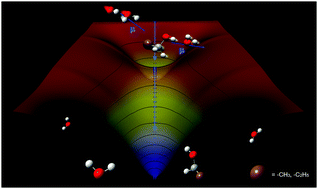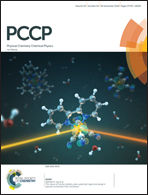Water catalysis of the reaction between hydroxyl radicals and linear saturated alcohols (ethanol and n-propanol) at 294 K†
Abstract
The rate coefficients for the reactions of OH with ethanol and n-propanol were determined by a relative method in a smog chamber at 294 K, 1 atm of air or N2 and a wide range of humidity. The rate coefficients for both reactions show a quadratic dependence on the water concentration as in the case of the reaction of OH with methanol (Jara-Toro et al. Angew. Chem., Int. Ed., 2017, 56, 2166). The detailed mechanism responsible for the reaction acceleration was studied theoretically at the uMP2/aug-cc-pVDZ level of theory while the electronic energies of all the structures were refined at the uCCSD(T)/aug-cc-pVDZ level. From these results it is suggested that the catalytic effect of two water molecules is due to two cooperative effects in the reactions between the ROH(H2O) and OH(H2O) equilibrium complexes: (1) an enhanced capture cross-section as a consequence of the larger dipolar moment of the ROH(H2O) and OH(H2O) complexes as compared to those of the free reactants ROH and OH and (2) a strong stabilization of the TSs below the energy of the reactants that leads to a very fast decomposition of the pre-reactive complexes to products with an extremely low probability of dissociation back to the reactants. The tropospheric lifetime of these alcohols is also shown to strongly depend on the humidity, suggesting the need to incorporate this dependence in global atmospheric models.



 Please wait while we load your content...
Please wait while we load your content...